Hand painted decor that looks like traditional Chinese chrysanthemum, painted underglaze, little pinholes in the glaze. Very good overall condition, minimal chipping and signs of use. Heavy (-ier than my Fortuyn plate).
Vraag
Is it possible to identify where and when this could have been made?
Afmetingen
Diameter ~23 cm, height ~3,5 cm
Collectie
publiekscollectie
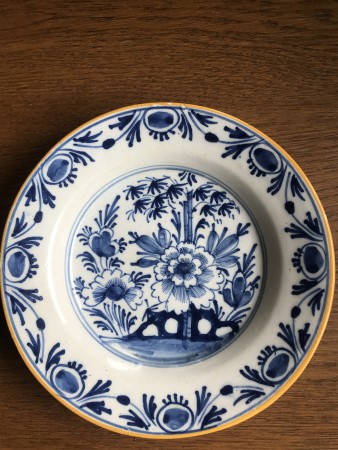
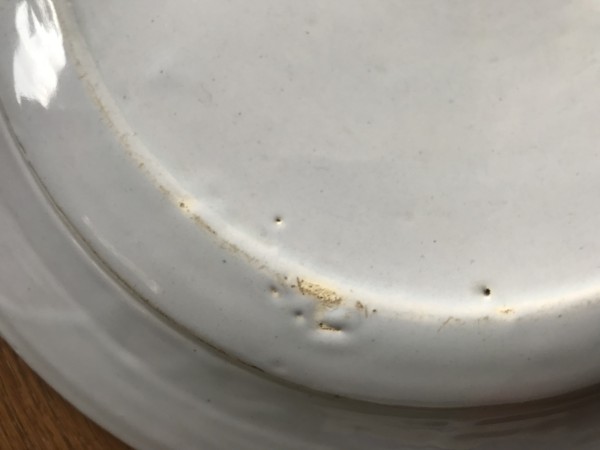
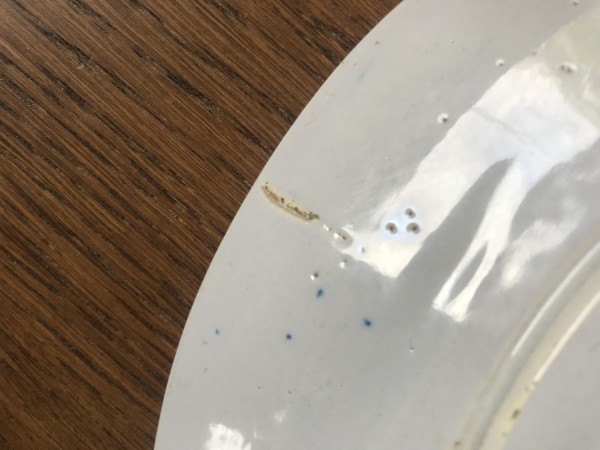
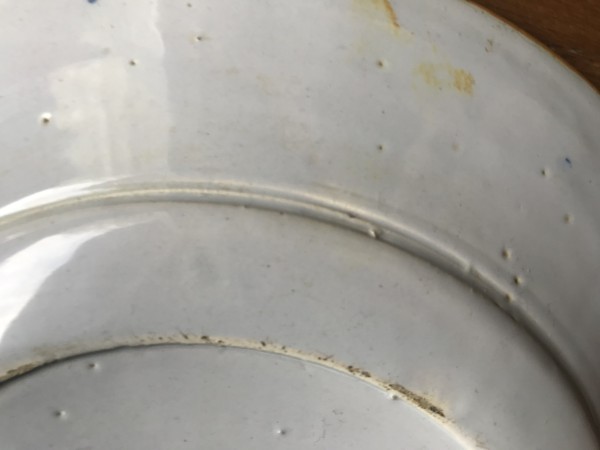


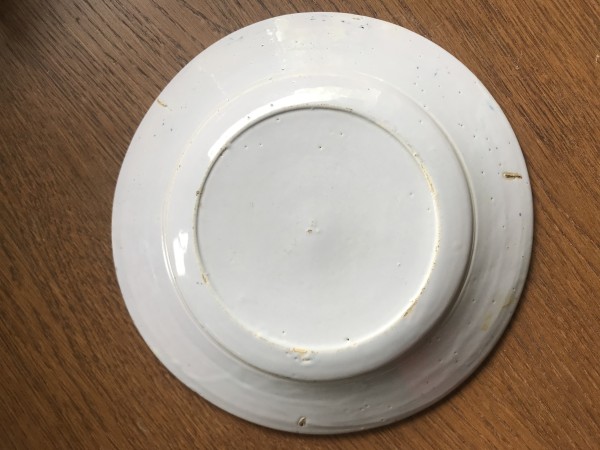











Reacties 8
Is not painted under the glaze but on the glaze, greetings jvdh.
Als antwoord op Is not painted under the… door Jan van den Heuvel1627
thank you. How do you see it's not underglaze?
I found a similar plate on an antiques dealer's website. It would date from around 1730 to 1750, has a diameter of 34 cm (this should also be the case with you if it is authentic) and, as Jan indicates, is indeed painted on glaze and not under glaze. Could have been produced in Delft itself and then it would have to have been in the period of Marcelis de Vlucht (1701 - 1750) where indeed no logo was applied. Greetings Franky
Als antwoord op I found a similar plate on… door FrankyStevelinck1026
Thank you for sharing, how do you see it's not underglaze? I would like to learn. To me it looks very much like on this plate, and the size is almost identical. https://delftsaardewerk.nl/bekijken/voorwerp/tetim/8376-t-fortuyn-plate
and then by the same logic, this plate would also be not underglaze? https://delftsaardewerk.nl/bekijken/voorwerp/tetim/8375-plate-societe-c…
Als antwoord op Thank you for sharing, how… door Teti_M
With Underglaze technique, painting is done directly on the clay fired for the first time, then (tin) glaze is sprayed on it and then fired for the second time at a slightly lower temperature. With overglaze, the glaze is first applied, painted on and then baked again so that the paint "melts" with the glaze. The underglaze is (usually) highly glossy and the overglaze slightly matt. You can also slightly feel the drawing with overglaze.
Als antwoord op With Underglaze technique,… door FrankyStevelinck1026
Thank you! I understand how the techniques are different, thanks for the "melts" with the glaze explanation, that makes it more specific for me. I probably need to look at more confirmed overglaze dishes to learn to see the difference, because for now it's not at all obvious to me, as a noob in pottery. Looks pretty much as shiny as newer marked with years De Porceleyne Fles items I have. I could say I do feel a bit of relief, but it's not like I could feel the drawing... only some points where the pigment is the darkest, feels a bit like "bump". Could it be something like this? https://delftsaardewerk.nl/bekijken/voorwerp/carla-van-wilgen/8279-bord…;
I am a bit confused about your comment re diameter, would appreciate if you could share a bit more on the sizes. Is there a link or reference I could learn more from?
Many thanks again for your inputs.
Beoordeling:
Toelichting:
Reactie toevoegen
Alleen ingelogde gebruikers kunnen reacties plaatsen
Login of registreer om te reageren